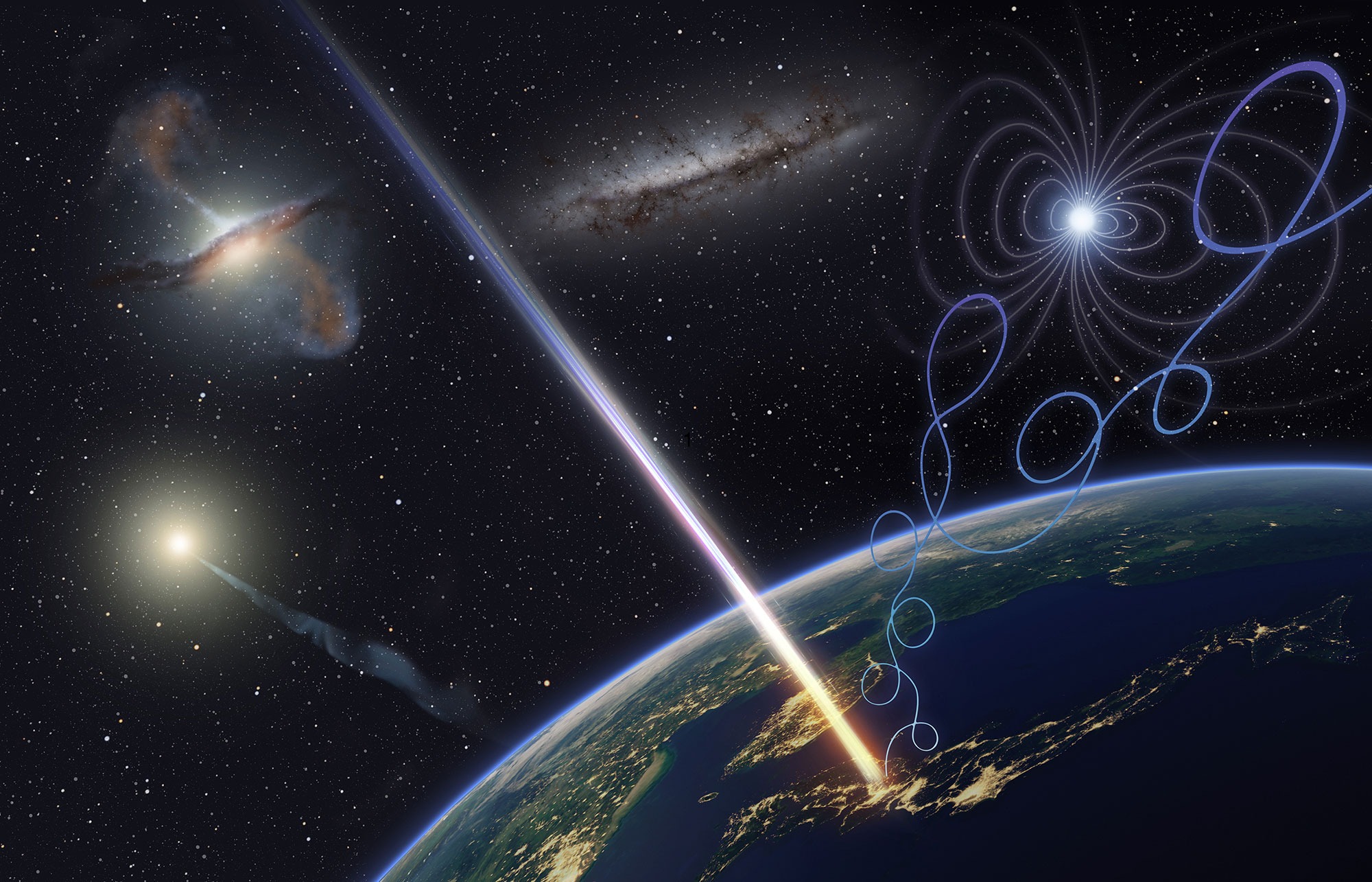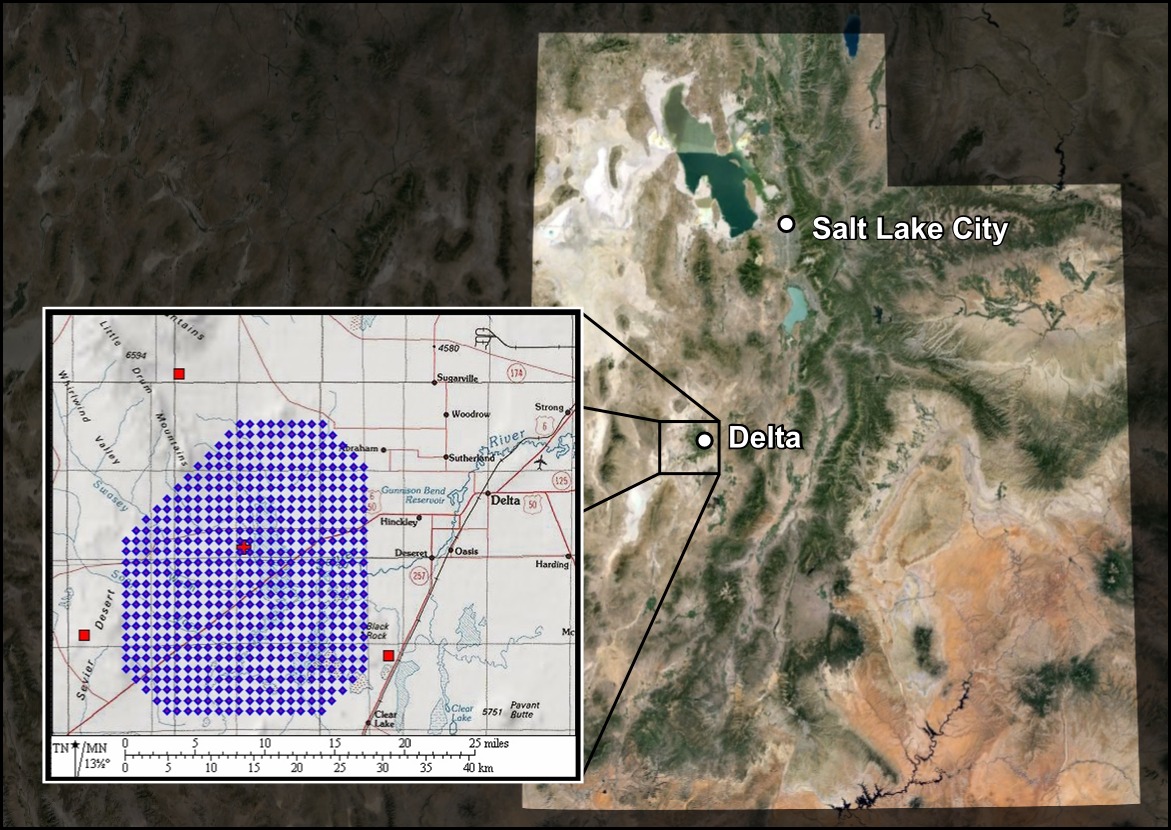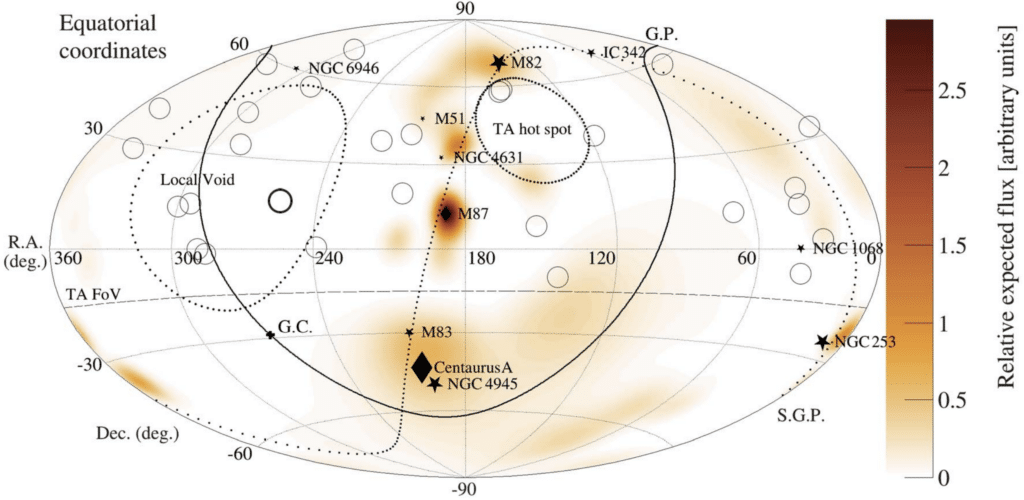Researchers have discovered the highest-energy cosmic ray particle that has ever reached Earth. It turned out to be so unique that it even got its own name — Amaterasu Particle. In terms of energy, it is second only to the legendary Oh-My-God particle, discovered more than 30 years ago. The origin of the mysterious particle has not been clarified yet: there is nothing at all in the part of the sky from where it came.

Cosmic rays are high-energy particles that occur in space (for example, in the Sun). The detected particle had to be produced by a source with a power exceeding anything known in our Galaxy or beyond. The Amaterasu particle had an energy of 2,4×10²⁰ eV, which was millions of times higher than the energy of particles generated in the Large Hadron Collider.

The discovery of the Amaterasu Particle occurred in May 2021 using the Telescope Array, located near Salt Lake City in Utah. 500 ground-based detectors are designed to detect events related to cosmic rays. Since 2007, more than 30 high-energy cosmic rays have been registered there.

“The particles are so high energy, they shouldn’t be affected by galactic and extra-galactic magnetic fields. But in the case of the Oh-My-God particle and this new particle, you trace its trajectory to its source and there’s nothing high energy enough to have produced it. That’s the mystery of this — what the heck is going on?” said John Matthews, one of the researchers from the University of Utah.
The most interesting thing is that particles of such high energies cannot even generate a supernova explosion. This particle appeared to come from an empty region of space at the edge of the Milky Way, known as the “Local Void.”

“It could be defects in the structure of spacetime, colliding cosmic strings. I mean, I’m just spit-balling crazy ideas that people are coming up with because there’s not a conventional explanation. This is a real mystery,” said John Belz.
Earlier, we reported on how we saw the benefits of dark matter research in dangerous cosmic rays.
According to gizmodo.com
Follow us on Twitter to get the most interesting space news in time
https://twitter.com/ust_magazine


